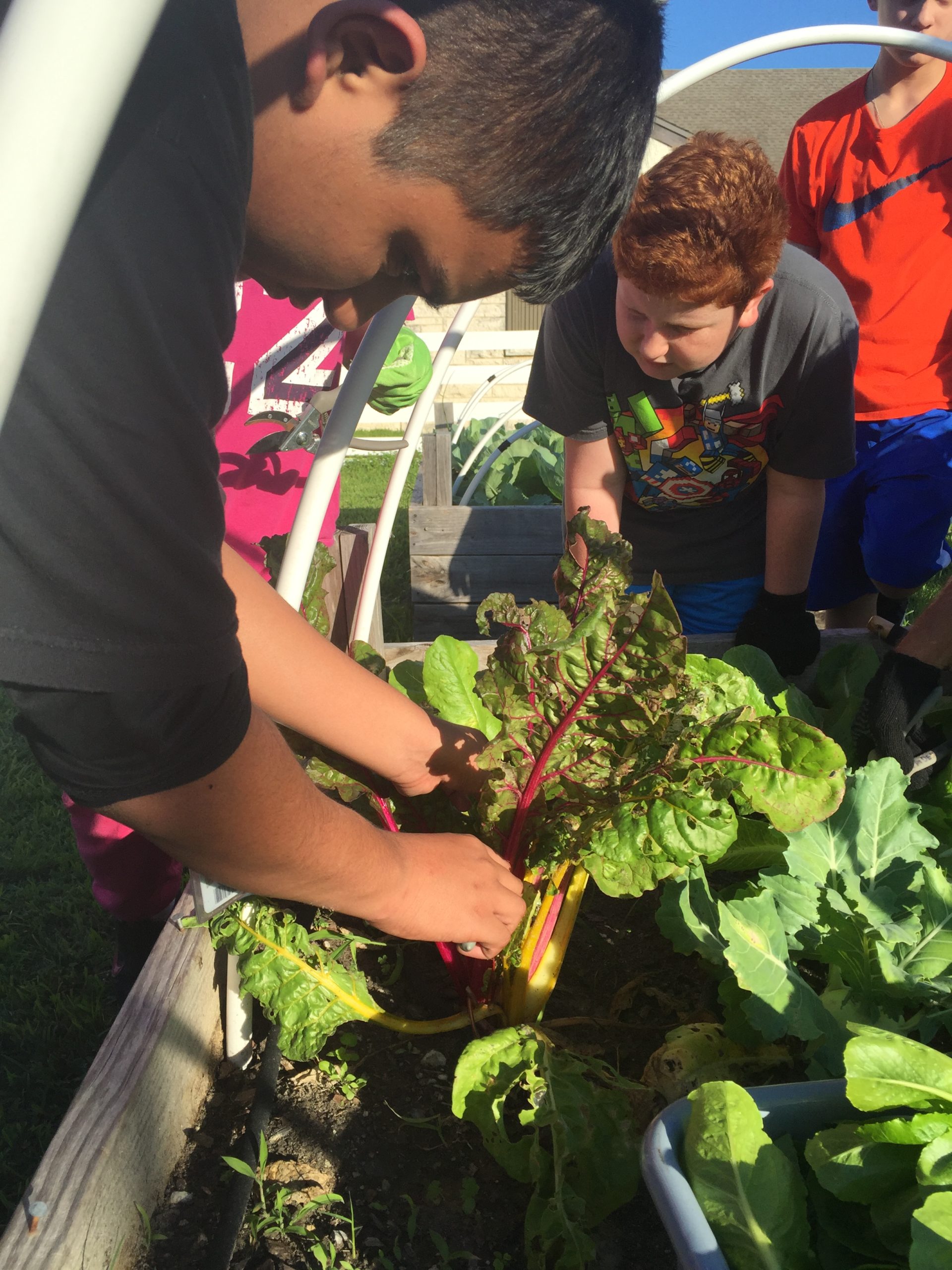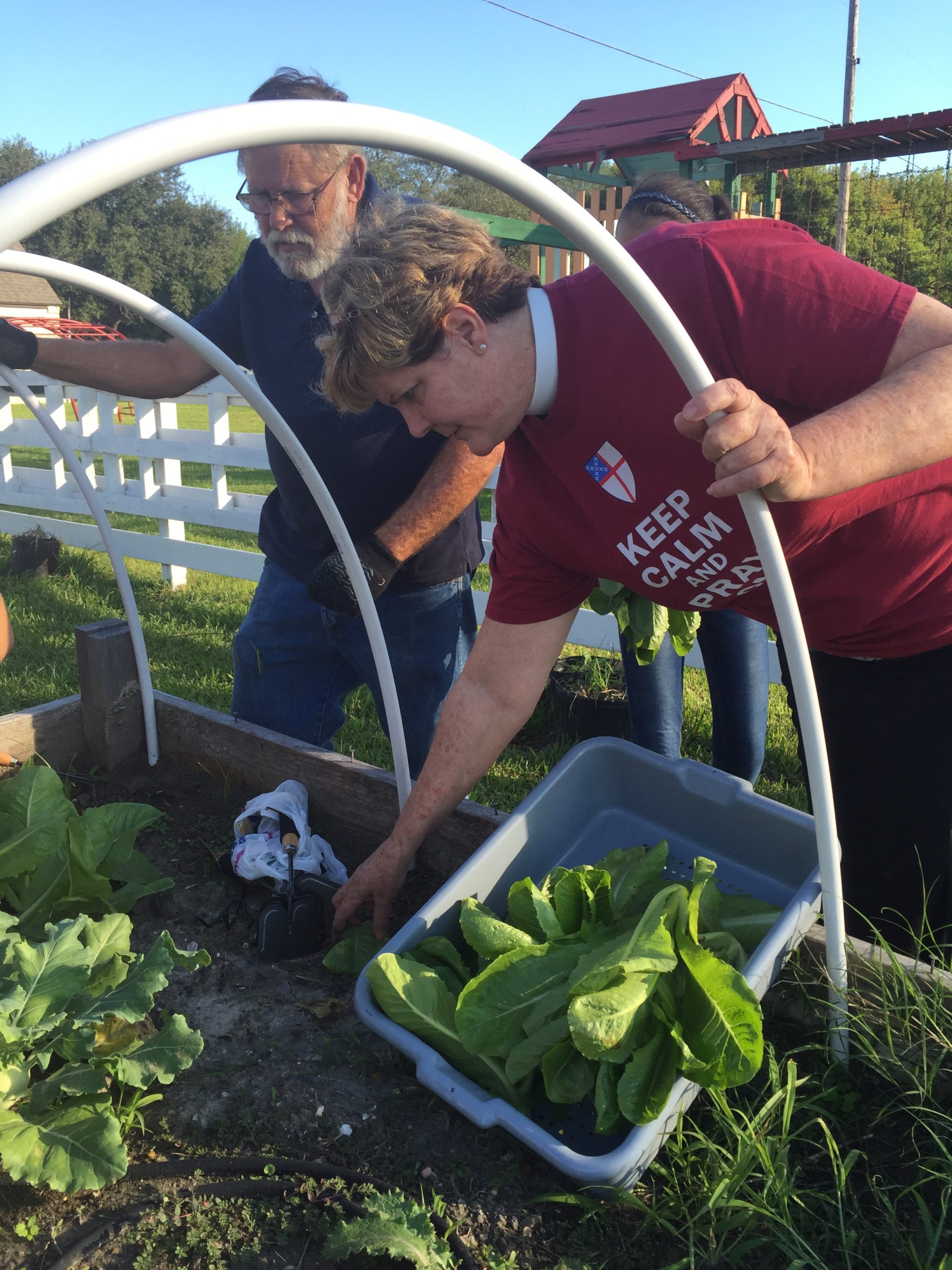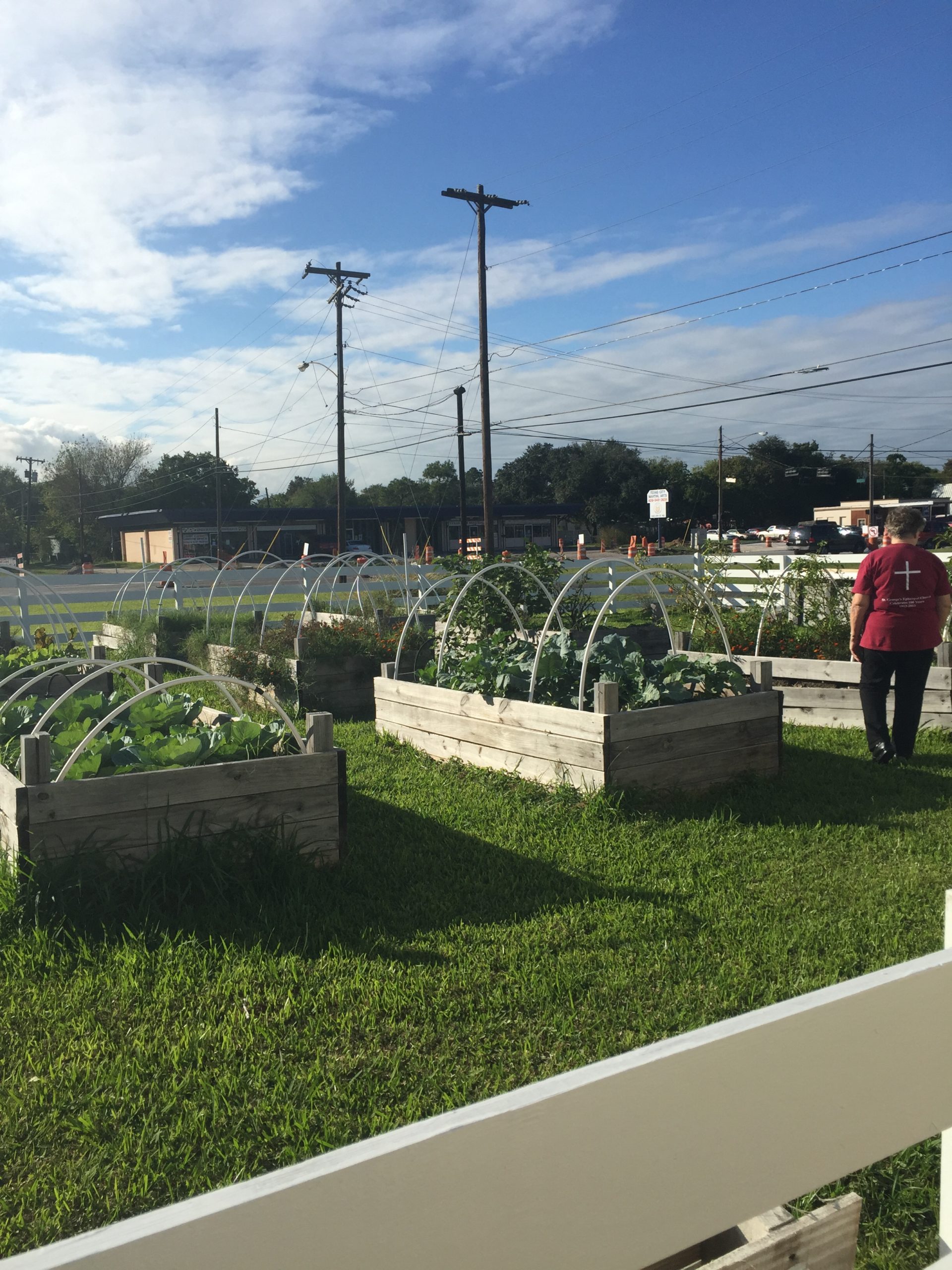
At St. George’s Episcopal Church in Texas City, a community garden has grown into much more than rows of fruits and vegetables. The Garden of Hope is a partnership with Blocker Middle School that not only provides gardening and nutrition education, it also has become a safe haven for at-risk youth. This Congregation Case Study shows how a small and aging congregation was able to leverage relationships across the community and use its building and property to both rejuvenate the congregation and contribute to a healthier community. It serves as a good example of ways in which a congregation can mobilize resources and build partnerships to have transformative impact on community health.
More than a garden
St. George’s Garden of Hope is focused on supporting at-risk youth at Blocker by providing an after-school gardening program that teaches students about healthy eating, gardening, and invaluable personal skills.
The program targets a diverse group of 7th and 8th grade students, 71% of which are economically disadvantaged. The partnership helps students make better food choices, creates a sense of community and belonging, and teaches the skills students need to be future leaders.
The Rev. Robin Reeves, Rector, quotes a familiar passage: “For I know the plans I have for you…plans to give you hope and a future.” Jeremiah 29:11.
“Some of these youth lack hope or a vision for their future,” Rev. Reeves said.
Serving the Texas City community for over 100 years, St. George’s is an older, family-sized parish, with less than 75 members. Nevertheless, members understand that they are “not done yet for having a purpose with God” and consistently seek opportunities to engage their community.
 Church member Caesar Romero and The Rev. Robin Reeves work in a section of the garden.
Church member Caesar Romero and The Rev. Robin Reeves work in a section of the garden.
How the Garden of Hope began at St. George’s
Because Blocker Middle School is located next door to the church, members at St. George’s had been looking for ways to work with the students.
“We wanted to determine how we could be good stewards,” Rev. Reeves said. “It was important for us to build a bridge between the church and the school.”
Rev. Reeves reached out to Principal Julie Southworth and talked about how the church could support the school. It began with prayer for students and STAAR tests, but soon blossomed into a new partnership.
The idea for the garden developed after a meeting on hunger awareness. Rev. Reeves met with Natalie Clark at the Galveston County Food Bank. They spoke about ways to combat hunger and the idea for a “teaching garden.”
Rev. Reeves then coordinated a meeting with Principal Southworth and Cat Stephens, a teacher who had hoped to create an after-school garden club. That’s when an idea turned into a working plan.
Getting Started
Rev. Robin Reeves and the church provided volunteers and land. School administrators and teachers recruited the students who would benefit from the program. Clark added knowledge and resources from the Food Bank.
“It was very risky because we didn’t have any money and we planned as we went,” Rev. Reeves said. “We felt led to start immediately.”
As the planning continued, they figured out the supplies and resources they needed. The partners knew they needed funding to support the program, to help develop the curriculum, to build the garden beds, and to buy the seeds and plants to grow the garden.
Caesar Romero, a St. George’s member, played a major role in developing the garden lessons and providing instruction at the garden on the church grounds.
“Caesar gave a lot of insight into gardening,” Clark said. “He had a plan in place before approaching anyone for donations and funds.”
In addition to Caesar’s expertise, the group consulted with the Texas A&M Junior master gardeners program to help develop the curriculum.
As for funding, Stephens wrote and received a grant from the Texas City ISD Foundation for the Future, which aims to support educational programs that lack funding or have been underfunded.
Strength in Relationships
While developing the program, it was clear that the Garden of Hope derived from a true partnership collaborative, which required the help and support of the entire community. As the group searched for resources and supplies, they were met with the overwhelming support of various community partners and church members.
“We had to go out and talk to a lot of individuals about the program,” said Clark. “We learned just how ready and willing people were to contribute to the program and also the kids, and the education they would be gaining. It was nice to see the community come together.”
The Texas City Feed store and Mayor Matt Doyle provided seeds and fruit trees for the garden. Church member Steve Mataro and his DSW Home employees donated the materials required and labor needed to help build the raised garden beds. Another church member, Tommy Clark, and the Trey Industries team provided the design, lumber, and personnel to build the garden fences.
“We discovered how supportive the community can be and how we all really care about our kids and what is good for them,” Rev. Reeves said.
Facing Challenges
Despite the overwhelming support of the community, church, and school staff, the development and implementation of this program did not come without challenges.
“When we began we had no funding, no real clear cut plan, but we knew it was our purpose,” Rev. Reeves said. “We did a lot of learning as we went.”
The project was largely funded through the community donation of materials and the dedicated time of volunteers. Organizers were able to narrow the focus in garden education by combining the knowledge and skills from all the partners, along with guidance from the Texas A&M Agri-life Extension program.
The challenges continued in 2014 when the school moved two miles away. Although the students had the opportunity to grow their own garden at the new school, they were dedicated to the Garden of Hope at St. George’s. However, after-school transportation became an important issue. Stephens was able to get a school bus to take the students to St. George’s once a week.
The next challenge – who would do the routine maintenance needed to keep the garden growing?
“The most difficult thing was initially not having enough maintenance volunteers,” said Clark. “The children only came once a week, so we had to work to find a volunteer base when the children were not available.”
Members at St. George’s and volunteers from the neighborhood jumped at the opportunity to provide this love and care for the garden.
Community Benefits
The Garden of Hope is about much more than garden education, and benefits both the students and volunteers in number of ways.
Blocker students now have an after-school program that gives them a place to belong. They have pride in harvesting something they’ve nurtured and are building leadership skills in responsibility and teamwork.
“Blocker is a Title 1 school, which means most of the students are low-income,” Stephens said. “The program introduces them to healthy eating habits. The kids learn to seed things and then they take home what they grow.”
“When any new vegetables and fruits are harvested, the kids are more apt to try something because they hadn’t had them before,” said Clark. “They’ve discovered a lot of new foods that they are learning to incorporate into their diet.”
Through the partnership, St. George’s has gained a new way to reach the community and children it serves. It provides a way for church volunteers to connect with, mentor, and share in youth experiences.
“It is a great way for older congregations to share and engage in ministry,” Rev. Reeves explained. ”Moses did not start his ministry until he was 80, and people have so much to give, that they don’t realize.”
In 2012, volunteers launched the Kids Cooking Club to educate children and their families how to prepare nutritious meals. The Garden of Hope has begun to provide fresh vegetables from the gardens to prepare meals during these cooking classes.

Looking Ahead
In its fourth year, the program currently has two gardens, one at the church and another at the school. Students alternate between the campuses every Tuesday.
St. George’s hopes to expand the Garden of Hope initiative in new ways in the coming years. While students and their families are learning the basics of gardening and nutrition through the program, there has been a call for introducing more innovative gardening techniques, such as hydroponic growing.
“We also hope to develop a summer program and expose more families and kids to where our food comes from and understanding organic gardening,” Rev. Reeves said.
“We hope that it continues to grow and serve as a pilot that other communities can replicate, and with the necessary community connections, it can have an impact on children’s’ health and education on food,” said Clark.
St. George’s, Texas City is a great example of a how a congregation, that may seem to have little, can tap into its assets and community resources to engage and empower those in their community.